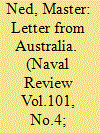| Srl | Item |
| 1 |
ID:
128692


|
|
|
|
|
| Publication |
2013.
|
| Summary/Abstract |
Dear Commander M
It is 35 years since I began this series of letters to you. reflecting on them, I am struck by the continuity which is apparent, even if it is one of rhyme rather than outright repetition.
|
|
|
|
|
|
|
|
|
|
|
|
|
|
|
|
| 2 |
ID:
130506


|
|
|
|
|
| Publication |
2011.
|
| Summary/Abstract |
My father is a Bedouin Arab who lived unquestioned on his historical tribal lands until 1948, after which the village was termed "unrecognized" and "illegal." My mother is an Arab Muslim from Nazareth. Even though she comes from one of the strongest Arab cities in northern Israel, she never identifies herself as such, choosing instead to be identified as hailing from her family's uprooted village that existed before 1948. My name is Safa Abu Rabia. I am a Bedouin, an Arab, a Muslim, a Palestinian and also an Israeli. I am all of these things together, but, at the same time, I am none of them.
|
|
|
|
|
|
|
|
|
|
|
|
|
|
|
|
| 3 |
ID:
129518


|
|
|
| 4 |
ID:
127890


|
|
|
|
|
| Publication |
2013.
|
| Summary/Abstract |
When and why do national movements succeed? What explains variation in the use and effectiveness of political violence employed by nationalist groups? Groups pursue common strategic goals against external enemies, such as the founding of a new state, while engaging in zero-sum competition for organizational dominance with internal rivals in their national movement. The distribution of power within a national movement provides its structure, which serves as the key variable for both the internal and external struggle. The hierarchical position of groups within the movement drives their actions, while the number of significant groups in the movement drives its effectiveness. Contrary to existing scholarship that treats nonstate coercers as unitary or suggests that united or fragmented movements perform best, hegemonic movements with one significant group are most likely to succeed. Hegemonic movement structure incentivizes the pursuit of shared strategic goals; reduces counterproductive violent mechanisms and foreign meddling; and improves the movement's coherence in strategy, clarity in signaling, and credibility in threats and assurances to yield strategic success. Analysis of seventeen campaigns involving sixteen groups within the Palestinian and Algerian national movements reveals that the power distribution theory explains greater variation in the effectiveness of national movements than previous scholarship.
|
|
|
|
|
|
|
|
|
|
|
|
|
|
|
|